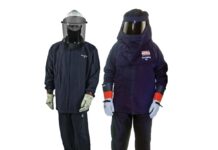The die-casting technical committee of AIM has promoted a study day on the theme of die-cast structural castings, precisely to provide some useful guidelines for their production. The event, held last november 9th, was hosted by Idra Presse at its technical centre.
When die-cast structural castings are at stake, we typically mean parts of vehicles’ chassis but also components for the marine, motorcycle and transport sector in general. The main characteristic shared by these castings are the generally big size, thin thickness and complex geometry, since they integrate different parts in a single component. This results, on one hand, in advantages in terms of better mechanical and dimensional features, lightening of structures and also cost reduction but, on the other hand, in higher manufacturing criticalities. In fact, die-cast castings, to be admitted in the market of structural castings, must assure very high mechanical performances, exceeding what the conventional technology permits and, besides, they often must permit to be heat-treated, welded and glued. These targets can be reached only using the most suitable Al alloys for these new applications, granting the absence of porosity that can be achieved only through a targeted control of each phase of the production process and applying the opportune heat treatments. With the aim of supporting the foundries that are approaching this sector paved with challenges, the Die-Casting Technical Committee of AIM promoted a Study Day on the theme, precisely to provide some useful guidelines for the production of castings for structural applications. The venue of the event, held last November 9th, was the Technical Centre of Idra. They imagined the topic of structural castings was attractive but the confirmation came from the large participation in the event, with over 70 attending people.
The market’s demands
After the opening welcome by the President of the Centre and the two Coordinators, the floor was given to an Italian OEM, so that he could explain their targets in the sector of die-cast structural castings and their demands to foundries. Mr Tatti, engineer of CRF – FCA Company, showed in fact the specifications imposed by automotive companies, in particular concerning the fatigue strength and crash performances. Moreover, he highlighted how mechanical characteristics can be subdivided into zones according to the use of the component and how the percentage elongation (A%) is not the only parameter to be chased but also the yield point is of high interest, proposing also alternative tests, such as bending failure tests, to assess the component deformability.
Studying mechanical properties
The second speech in the morning was of academic type. Professor Pola, in fact, illustrated to participants why the percentage elongation is such an interesting property in the characterization of parts for the automotive industry. After illustrating how it is correlated to the material ductility, and then to its capacity of absorbing shocks in case of crash, she illustrated the measuring methods of A% and what aspects to keep under control in the execution of a tensile test to assure reliable results, like for instance the application speed of the load/deformation, the correct definition of the specimen’s size and so on. She finally ended her speech by illustrating the material’s parameters that influence its ductility, i.e. the presence of porosity, the presence of Fe-based intermetallic compounds (typical of die-casting) and the morphology of the eutectic silicon, which can be controlled through the choice of the suitable alloy and the opportune heat treatment parameters. The importance of the use of opportune alloys was also the theme of a foundry, deploying its well-proven experience in the sector of structural castings. Marco Facchinetti from Fonderie Cervati showed in fact some examples of components in production and their respective mechanical requisites. An example consisted in the door uprights for SUV vehicles of JLR group, that is to say die-cast components that must be welded and riveted with the bottom part of the door, for which they provide A% of around 10% and a yield point exceeding 160 MPa, with porosity levels from 1 to 2 according to the ASTM E505 regulation. He ended his speech by underlining precisely the importance of identifying new specific alloys for die-cast structural castings, matter at which they are working in collaboration with one of their trusted suppliers and partners to test new compositions that mirror automotive companies’ mechanical and structural requisites and can be used for different products, like in the case of components for battery housings.
The novelties of simulation
The morning continued with the speech by Mr Viscardi, engineer from Ecotre Valente, who presented the novelties in the sector of die-casting simulations and how they can be useful in the determination of process parameters for the production of structural castings. During the speech, he showed how nowadays it is possible to simulate the entire die-casting cycle, from the lubricant spraying with mobile head up to the casting deformations after blanking, and how software allow foreseeing the service life of tools and choosing the suitable press for the production of a component. Moreover, the speaker underlined the importance of the detail definition in the process virtualization, like the complete modelling of the injection system (piston and container), showing with applicative examples how it is possible to foresee the quality differences of the casting by varying the piston type used. Finally, he presented the novelties concerning the simulation of the air ejection from tools, ending with an overview on new vacuum systems.
Heat treatments
The study day prosecuted with another speech of academic character, delivered by Prof. Morri, about the specificities of the heat treatment of structural castings. After an introduction on strengthening mechanisms, necessary to explain the theoretical principles that are at the base of the T6 heat treatment, he illustrated the problems that can emerge while hardening (blisters and residual stresses, and how they can be controlled by choosing the suitable process parameters (lower temperature or solubilization time) or alternative treatments (ex. T1 or T5), explaining also the differences in terms of final performances and the causes of such differences. Prof. Morri ended then his speech with a detailed review of the available data in literature about the T6 treatment of die-cast castings, which highlights how, for each casting, it is advisable to optimize treatment parameters, as final results are influenced by the starting characteristics of the casting, i.e. by filling and solidification modalities.
Residual stresses without any longer mysteries
Continuing on the heat treatment topic, Mr Scarpa, engineer from Enginsoft, illustrated the simulation software evolutions in the forecast capabilities of residual stresses at the ejection time of the casting from the tool, as well as after the heat treatment. Showing practical examples concerning thin-walled structural castings, he in fact underlined the advantages of simulation in the setup of virtual experiments even before defining equipment, like in the case of support frames of castings during heat treatments (solubilization). To avoid deformations of the component connected with creep phenomena that can arouse at high temperature, virtualization proves to be a valid instrument to compare quickly the effects of different manufacturing solutions, thus succeeding in modelling and optimizing the entire production cycle of the casting.
The good rules of blanking
The blanking phase constitutes a key point in the die-casting process, especially in the case of thin-walled structural castings where, owing to complex and multiple gates and air draughts for vacuum, the piece separation can induce strong deformations. It is what highlighted by Pederzoli, engineer from Meccanica Pi.Erre, who illustrated how nowadays it is possible to blank very big pieces but with subtle thicknesses, automatically, granting a systematic unload of castings, pits, vacuum and burrs, permitting to avoid burdensome operations of manual deburring finishing. The presence of control systems (photocells, proximity, etc.) allows now checking the presence as well as the alignment of the component, its correct position and the correct ejection of the blanked part, all fundamental aspects that make the blanking operation integral part of the die-casting process and share in improving quality and productivity.
Performing machines for a performing sector
As blanking presses are suiting the sizes of the new structural castings, likewise die-casting ones must meet the new market requirements for the production of die-cast castings for high-performance vehicles. Mr Boni, engineer from Idra, so illustrated the characteristics of the new high-tonnage machines, up to the current biggest machine in production, featuring 5500 tons, fully automated and equipped with control systems, in particular injection and vacuum through the respective curves.
Finally, the A2A foundry presented some examples of die-cast castings currently in production, like the front crossbar of which they illustrated all implementation phases, from the alloy choice to the design of tool and process parameters through the simulation, up to casting and heat treatment.
Then, the day ended with the visit to Idra departments, where it was possible to observe the various phases of the production process of a press, so completing the overview of the various aspects concerning the production of die-cast structural castings.



